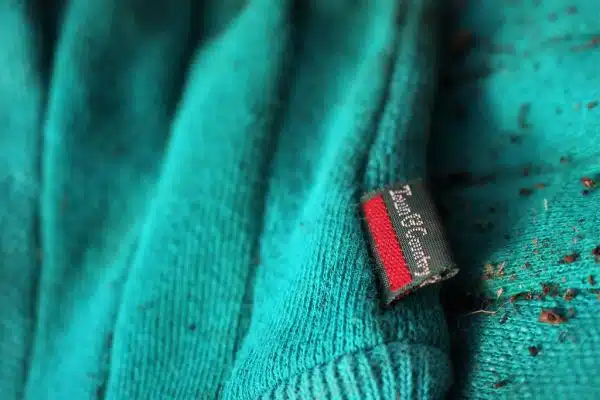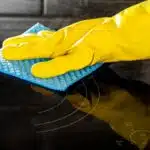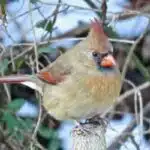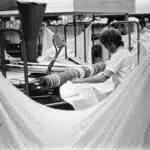Welcome to the world of gardening gloves! Gardening is a wonderful activity that helps you connect with nature and accomplish something tangible. However, it can also be tough on your hands, especially if you are working with thorny plants or digging in the soil. That’s why wearing gloves is essential for every gardener. But just like any other piece of clothing, gardening gloves need care and attention to keep them clean, comfortable, and functional. In this article, we will explore some tips and tricks on how to wash and care for your gardening gloves so that they can serve you well for many seasons to come.
Firstly, it’s important to understand that not all gardening gloves are created equal. There are different types of materials and designs that cater to different needs and preferences. Some gloves are made of leather or synthetic fabrics, while others have rubberized coatings or reinforced fingertips. Before washing your gloves, make sure to read the manufacturer’s instructions carefully to avoid damaging the material or compromising their protective qualities. Additionally, consider the level of dirtiness and wear-and-tear before deciding on a cleaning method. By following these guidelines, you can ensure that your gardening gloves remain an indispensable tool in your green-thumb arsenal.
Types Of Gardening Gloves
Gardening gloves are an essential tool for any gardener, providing protection and comfort while working with soil, plants, and garden tools. They come in a variety of materials, each with its own set of advantages and disadvantages. The most common materials used for gardening gloves include leather, cotton, rubber, and synthetic fabrics.
Leather gloves are known for their durability and flexibility. They are ideal for heavy-duty tasks like pruning thorny bushes or handling sharp objects. However, they can be expensive and require special care to keep them in good condition. Cotton gloves are lightweight and breathable, making them perfect for light gardening tasks. They are also affordable and easy to wash but lack the strength needed for heavier work.
Rubber gloves provide excellent protection against water, chemicals, and other liquids that may damage the skin. They are ideal for wet or messy jobs like planting in muddy soil or handling fertilizers. However, they can be uncomfortable to wear for long periods of time and may cause sweating or skin irritation. Synthetic fabrics like nylon or polyester offer a balance between durability and comfort. They are lightweight and flexible yet strong enough to protect against cuts and abrasions.
Choosing the right gloves for your needs is essential to ensure your hands stay safe while gardening. Consider the type of task you will be performing, the level of protection required, as well as your personal preferences when selecting a pair of gardening gloves. By understanding the pros and cons of different types of materials available on the market today, you can make an informed decision about which gloves will best suit your needs.
Choosing The Right Gloves For Your Needs
After learning about the types of gardening gloves available, the next step is to choose the right gloves for your needs. Factors to consider include the type of gardening activity you will be doing, as well as your personal preferences and budget. Some gloves are designed specifically for pruning or digging while others provide more general protection.
When it comes to cost effectiveness, choosing the right gardening gloves for your budget and needs is important. While some high-end gloves may offer more features and durability, they may not be practical for those on a tight budget or who only garden occasionally. On the other hand, cheaper gloves may not hold up well over time or provide adequate protection.
To ensure that you are getting the best value for your money, consider investing in a few pairs of gloves that cover a range of activities. This way, you can switch between them as needed without worrying about wearing out a single pair too quickly. Additionally, look for sales and discounts on gardening gloves to get the most bang for your buck.
Understanding the material of your gloves is also important in caring for them properly. In the next section, we will explore different materials commonly used in gardening gloves and how to wash and care for each one.
Understanding The Material Of Your Gloves
Before you begin washing and caring for your gardening gloves, it is important to understand the material they are made from. Different types of gardening glove materials require unique care strategies to maintain their quality and durability. Common materials used in gardening gloves include leather, cotton, synthetic fabrics, and rubber.
Leather gloves are a popular choice for gardeners due to their durability and flexibility. However, they can be sensitive to water and moisture, which can cause them to shrink or harden. Cotton gloves are lightweight and breathable, but they may not provide as much protection as other materials. Synthetic fabrics like nylon and polyester offer excellent flexibility and grip while being resistant to water damage. Rubber gloves are ideal for wet conditions but can be less flexible than other materials.
Understanding glove sizing is also crucial when selecting the right pair of gloves for your needs. Gloves that are too small can restrict movement and cause discomfort while those that are too large can slip off during use. It is recommended to measure your hand size before purchasing gardening gloves.
To summarize, understanding the material of your gardening gloves is essential in caring for them properly. Different types of materials have unique strengths and weaknesses that should be considered when selecting a pair of gloves or deciding on a cleaning strategy. Additionally, ensuring proper sizing will improve the comfort and effectiveness of your gloves during use.
The Importance Of Proper Care
- Regular cleaning of gardening gloves is essential to maintain their longevity and usefulness.
- Ideally gloves should be washed by hand using warm, soapy water and a soft cloth.
- Gloves should be stored in a cool, dry place away from direct sunlight and other sources of heat.
- It is recommended to replace gardening gloves if they become torn or overly worn to ensure the hands remain safe and clean.
- If gloves become soiled with difficult to remove substances, they should be soaked in warm water and a mild detergent before washing.
- For maximum longevity, gardening gloves should be inspected regularly and replaced when they become worn or damaged.
Cleaning Gloves
Are you tired of using gloves that are stained, smelly and worn out? Proper cleaning techniques and maintenance tips can go a long way in prolonging the life of your gardening gloves. In this article, we will discuss the importance of cleaning gloves and how to properly care for them.
Cleaning techniques vary depending on the type of gloves you have. For leather or suede gloves, use a damp cloth to wipe off dirt and stains. Avoid soaking them in water as it can damage the material. For fabric or synthetic gloves, hand wash with mild detergent and warm water. Rinse thoroughly and air dry. Avoid using bleach or fabric softeners as they can weaken the fibers.
Maintenance tips include storing gloves in a cool, dry place away from direct sunlight. This prevents fading and cracking of materials. If your gloves become wet while gardening, allow them to air dry completely before storing them. Regularly inspect your gloves for any signs of wear or tear and replace when necessary.
In conclusion, proper care for gardening gloves is crucial in ensuring their longevity and effectiveness in protecting your hands during gardening activities. By following these simple cleaning techniques and maintenance tips, you’ll be able to enjoy your favorite pair of gardening gloves for years to come!
Storing Gloves
As a gardening glove care expert, it is important to emphasize the significance of proper storage for gloves. One of the most important tips for organizing and maintaining garden gloves storage is to keep them in a cool, dry place away from direct sunlight. Exposure to sunlight can cause fading and cracking of materials which may lead to decreased effectiveness in protecting your hands during gardening activities.
Another essential tip for storing gloves is to make sure they are completely dry before placing them into storage. Wet gloves that are not dried properly may promote the growth of mold and bacteria which can lead to unpleasant odors and even infections when used again. To prevent this, always allow your gloves to air dry completely before storing them.
Lastly, it is recommended that you regularly inspect your stored gloves for any signs of wear or tear, as well as any presence of mold or mildew. If you notice any issues, it’s best to clean them immediately before using them again. By following these tips for organizing and maintaining garden gloves storage and cleaning gloves for reuse, you’ll be able to extend their lifespan and maximize their effectiveness in protecting your hands while engaging in various gardening activities.
Replacing Gloves
Proper care is essential to maintain the quality and effectiveness of gardening gloves. However, there comes a time when even with proper care, gloves need to be replaced. Knowing when to replace your gardening gloves is crucial in ensuring safety and preventing injury. Signs of wear and tear such as holes, rips, or loose seams indicate that it’s time to replace them. Worn-out gloves may not provide enough protection and could lead to skin injuries or infections.
When disposing of old gloves, it’s important to do so responsibly. Garden gloves are made from different materials such as leather, cotton, or synthetic fabrics that can take years to decompose in landfills. To minimize environmental impact, look for ways to recycle or repurpose old garden gloves instead of throwing them away in the trash. Some communities offer recycling programs for textiles, while others accept donations for reuse.
In summary, replacing gardening gloves is an important aspect of proper glove care. Knowing when to replace them can prevent accidents and ensure optimal protection during gardening activities. Additionally, disposing of old gloves responsibly can minimize environmental impact and support sustainable practices. Regularly inspecting your garden gloves for signs of wear and tear and looking for disposal options that align with sustainability practices are key elements in maintaining healthy hands while tending your garden.
Preparing Your Gloves For Washing
Before washing your gardening gloves, it is important to prepare them properly. Begin by removing any large clumps of dirt or debris from the gloves by gently shaking them or using a soft-bristled brush. This will prevent excess dirt from clogging up your washing machine or causing damage to the gloves during the wash cycle.
If your gloves have stubborn stains that cannot be removed through simple brushing, you may want to consider using specialized cleaning products. There are several types of stain removers on the market specifically designed for use on fabric and leather gloves. Be sure to follow the manufacturer’s instructions carefully and test the product on a small, inconspicuous area of the glove first to ensure that it does not cause any damage.
Once your gloves are prepped and ready for washing, you can proceed with choosing a method that is appropriate for their material and level of soiling. In the next section, we will discuss how to hand-wash your gardening gloves in detail, as this is often the safest and most effective method of cleaning.
As we move forward into discussing hand-washing techniques, it is important to note that proper preparation of your gardening gloves prior to washing can make all the difference in achieving optimal results. By following these steps, you can ensure that any stubborn stains are treated before they set in further and that your gloves are ready for a thorough clean without being damaged during washing.
Hand-Washing Your Gardening Gloves
- The first step for washing gardening gloves is to gently scrub them with warm, soapy water.
- Rinse the gloves with clean, cold water and then hang them to dry.
- To help maintain the shape and form of the gloves, stuff them with newspaper or paper towels and hang them in a cool, dry place.
- For more thorough cleaning, use a mild detergent and a soft brush to remove dirt and debris from the gloves.
- To store your gardening gloves, wrap them in a breathable fabric, such as cotton or linen, and store in a cool, dry place.
- To maximize the lifespan of your gardening gloves, inspect them regularly and replace them when they become worn or damaged.
Steps For Washing
When it comes to maintaining the quality of your gardening gloves, washing them regularly is essential. However, to ensure that your gloves do not become damaged during the washing process, there are a few important steps that you need to keep in mind. Firstly, make sure to check the care instructions on the label of your gloves before washing them. This will help you determine whether or not they can be machine-washed and what temperature setting should be used.
Once you have determined how to wash your gloves, it is important to avoid common mistakes that could cause damage. For example, do not use bleach or fabric softener as this can weaken the fibers of the gloves and reduce their effectiveness. Additionally, avoid drying your gloves in direct sunlight or using a high heat setting on your dryer as this can cause shrinkage and cracking.
After washing your gloves, proper drying techniques are crucial for maintaining their shape and durability. It is recommended to air dry them by laying them flat or hanging them up by their cuffs in a cool and well-ventilated area. Avoid wringing out excess water or using a clothespin as this can cause stretching and deformities in the glove material. By following these simple steps for washing and drying your gardening gloves, you can ensure their longevity and maintain their protective benefits while working in the garden.
Drying And Storage
As a gardening glove care expert, it is my duty to provide you with the necessary information on how to properly care for your gloves. After washing your gloves, proper drying techniques are crucial for maintaining their shape and durability. One of the most important decisions to make when drying gloves is whether to air dry or machine dry them. Air drying is recommended as it is less harsh on the material and helps preserve its quality over time. On the other hand, using a dryer may cause damage to the fabric due to high temperatures and tumbling.
When air drying your gardening gloves, it is essential to choose an appropriate location for this process. A cool and well-ventilated area will allow for optimal ventilation while preventing mold growth or unpleasant odors from developing. Additionally, avoid direct sunlight and heat sources as they can cause cracking or discoloration in the material. Hanging your gloves by their cuffs or laying them flat are both suitable methods for air drying.
Storing your gardening gloves properly can also help extend their lifespan. In different climates, different storage solutions may be required. For example, in humid climates, storing gloves in an airtight container with silica gel packets can help prevent moisture buildup that could lead to mold growth or unpleasant odors. In drier climates, storing gloves in a breathable container such as a mesh bag will allow for proper ventilation while keeping them safe from dust and debris. By following these tips for drying and storing your gardening gloves after washing them, you can ensure they remain durable and effective over time.
Materials Needed
As a gardening glove care expert, it is essential to know how to properly hand-wash your gloves. While machine washing may seem like an easy solution, it can cause damage to the material and affect their durability. DIY cleaning is a better option as it allows you to control the process and use alternative materials that are gentle on your gloves.
When hand-washing your gardening gloves, you will need a few basic materials. Firstly, choose a mild detergent that is non-abrasive and fragrance-free. Next, gather a bowl or sink of lukewarm water, a soft-bristled brush or sponge, and a clean towel for drying. Avoid using bleach or fabric softeners as they can damage the material and reduce their effectiveness over time.
To begin cleaning your gloves, immerse them in the soapy water and gently scrub any dirt or stains with the brush or sponge. Avoid rubbing too hard as this can cause unnecessary wear and tear on the fabric. Rinse thoroughly with clean water until all soap residue is removed. Then gently squeeze out excess water from your gloves before laying them flat on a clean towel to dry.
By following these tips for hand-washing your gardening gloves with alternative materials, you can ensure they remain durable and effective over time. Remember to be gentle when scrubbing and avoid using harsh chemicals that could damage the material. Properly caring for your gloves will not only extend their lifespan but also improve their performance when working in the garden.
Machine-Washing Your Gardening Gloves
Washing your gardening gloves in a washing machine can be compared to sending them on a spa day. The gentle swishing of the water and the warm embrace of the soap will leave your gloves feeling renewed and refreshed. However, it is important to treat your gloves delicately so they do not get damaged in the process.
Start by turning your gloves inside out, as this will prevent any dirt or debris from becoming trapped inside. Then, place them into a mesh laundry bag so they do not get tangled or damaged during the wash cycle. Use a mild detergent and avoid using fabric softener, as this can cause the gloves to become slippery and lose their grip.
If you prefer not to use a washing machine, there are alternative washing methods available. You can hand wash your gloves with warm water and mild detergent, or soak them in a bucket of soapy water for an hour before rinsing with clean water. Whatever method you choose, make sure to rinse your gloves thoroughly and squeeze out any excess water before moving on to drying.
As you finish up washing your gardening gloves, remember that drying them is just as important as washing them. With proper care, you can extend the life of your gloves and enjoy many more gardening seasons with comfortable hands. Let’s move on to the next section about how to dry your gardening gloves properly.
Drying Your Gardening Gloves
After machine-washing your gardening gloves, it is important to properly dry them before using them again. Using a dryer is the most convenient and quickest way to dry them, but it can also be damaging if not done correctly. To prevent gloves from shrinking or stretching during drying, use low heat and check on the gloves periodically to ensure they are not overheating.
However, alternative drying methods are also available for those who do not have access to a dryer or prefer more natural methods. One option is air-drying, which involves laying the gloves flat on a clean surface in a well-ventilated area. Another option is hanging the gloves upside down by their cuffs using clothespins or hangers. Both methods will allow the gloves to dry naturally without causing any damage.
To avoid common mistakes when drying gardening gloves, always refer to the manufacturer’s care instructions and avoid using high heat settings on dryers. Also, make sure that the gloves are completely dry before storing them to prevent mold or mildew growth. Proper drying techniques will help prolong the life of your gardening gloves and keep them in good condition for future use.
Transitioning into the subsequent section about avoiding common mistakes: By following these tips for washing and drying your gardening gloves, you can ensure that they remain in good condition and provide adequate protection for your hands while working in the garden. However, there are still some common mistakes that people tend to make when caring for their gardening gloves that can lead to unnecessary damage or wear.
Avoiding Common Mistakes
Common mistakes in washing gardening gloves can lead to irreversible damage and a shorter lifespan for your gloves. One common mistake is using hot water, which can cause the gloves to shrink or lose their shape. Another mistake is using harsh detergents or bleach, which can weaken the fabric and cause it to break down over time. Lastly, many people make the mistake of putting their gloves in the dryer, which can cause them to shrink or melt.
To maintain the longevity of your gardening gloves, it’s important to avoid these common mistakes and follow some simple tips. First, always wash your gloves in cold water with a mild detergent. This will help preserve the fabric and prevent shrinking. Second, let your gloves air dry instead of putting them in the dryer. This will preserve their shape and prevent melting or shrinking. Lastly, consider using a fabric softener or conditioner specifically designed for gardening gloves to help keep them soft and supple.
By avoiding common mistakes in washing and following these tips for maintaining the longevity of your gardening gloves, you can ensure that they last as long as possible. In the next section, we’ll discuss how to properly store your gardening gloves when you’re not using them to further extend their lifespan and protect them from damage.
Storing Your Gardening Gloves
Similar to how a caterpillar wraps itself in a cocoon for protection, your gardening gloves need to be stored properly to ensure their protection. Storing your gloves correctly will not only extend their lifespan but also keep them odor-free and ready for use the next time you need them. Here are some storing options and tips that can help you take care of your trusty gardening companions:
- Keep them dry: Moisture is the enemy of any leather or fabric material. Make sure your gloves are completely dry before storing them away. If they’re wet, hang them outside in the sun or near a heat source until they’re completely dry.
- Store them in a cool, dark place: Direct sunlight can cause fading, hardening or cracking of leather materials. It’s better to store your gloves in a cool, dark place like a closet or cabinet.
- Don’t pile them up: Piling up gloves on top of each other can cause damage and deformities to the material. Instead, store them flat or hang them by the wrist using hooks or hangers.
Preventing odor is crucial when it comes to storing gardening gloves. Gloves that aren’t stored properly can develop an unpleasant odor due to bacteria buildup from sweat and dirt. To prevent this:
- Sprinkle baking soda inside each glove before storing it away
- Use fabric softener sheets
- Create sachets with herbs like lavender or mint leaves
By following these tips, you’ll be able to keep your gardening gloves in excellent condition so they’ll last for years to come. In the next section, we’ll explore how you can create DIY cleaning solutions for your gloves without causing any harm to the material.
Diy Cleaning Solutions
After properly storing your gardening gloves, it is important to keep them clean and well-maintained for prolonged use. Regular washing can help remove dirt, grime, and sweat that accumulate on the gloves over time. However, it is essential to follow specific guidelines to avoid damaging the gloves during the cleaning process.
Natural ingredients can be used to clean your gardening gloves effectively. Mix equal parts of white vinegar and water in a bowl and soak your gloves in this solution for about 30 minutes. Then, rinse your gloves with cold water and let them air-dry thoroughly. Another useful solution is baking soda mixed with water. Scrub the mixture onto your gloves using a soft-bristled brush, rinse it off, and dry them naturally under the sun or in a well-ventilated area.
DIY glove repair can be an excellent option if you notice any holes or tears in your gardening gloves. Small holes can be repaired using a needle and thread or a patch made of similar material as the glove. For more significant damage, consider using rubber cement glue or fabric glue to seal the tear temporarily before sewing it up. It’s always best to repair gloves immediately after noticing any issues to prevent further damage.
Transition into subsequent section: While regular washing helps maintain the cleanliness of your gardening gloves, there are instances where deep cleaning may be necessary. In such cases, specific procedures need to be followed to avoid causing damage to your favorite pair of gardening gloves.
Deep Cleaning Your Gardening Gloves
As a gardening glove care expert, it is important to know how to deep clean your gloves to keep them in good condition. Deep cleaning should be done periodically to remove any stubborn dirt or stains that regular washing cannot remove. Using natural cleaning solutions is the best way to ensure that your gloves are not damaged during cleaning.
To deep clean your gardening gloves, you can use a mixture of warm water, vinegar and baking soda. Simply mix equal parts of warm water and vinegar in a bowl and add a tablespoon of baking soda. Soak your gloves in the solution for about an hour before scrubbing them with a soft-bristled brush. Rinse thoroughly with clean water and let them air dry.
Preventing wear and tear on your gardening gloves is crucial if you want them to last longer. After deep cleaning, avoid using harsh chemicals or detergents when washing your gloves as these can weaken the fibers and cause them to deteriorate quickly. Furthermore, always store your gloves in a cool, dry place away from direct sunlight to prevent fading or cracking.
When it comes time to replace your gardening gloves, it’s important to choose gloves that are the right fit for you. Ill-fitting gloves can cause discomfort and even lead to injuries while working in the garden. Look for gloves made from high-quality materials that are durable enough to withstand frequent use. Remember that proper care and maintenance will prolong the life of your gardening gloves!
Replacing Your Gardening Gloves
Did you know that the average lifespan of a gardening glove is only around 6 months? This is because gardeners tend to use their gloves heavily and expose them to various elements such as water, soil, and chemicals. Knowing when to replace your gardening gloves can help prevent injuries and keep your hands safe while doing garden work.
Signs of wear and tear in gardening gloves may include holes or tears in the fabric, frayed edges, or loss of grip. If you notice any of these signs, it may be time to replace your gloves. Another indicator is if they no longer fit properly or have become uncomfortable to wear.
Replacing your gardening gloves regularly not only helps keep your hands safe but also ensures that you are getting the best performance from your gloves. By replacing them every 6-12 months, you can maintain good hygiene practices while ensuring maximum protection for your hands. In the next section, we will discuss how you can extend the lifespan of your gloves by proper washing and care techniques.
Extending The Lifespan Of Your Gloves
As a gardening glove care expert, I understand the importance of maintaining your gloves to ensure they last as long as possible. Here are some tips for maintenance that will help extend the lifespan of your gloves. First, be sure to store them in a cool, dry place when not in use. This will prevent mold and mildew from forming on the fabric.
Secondly, consider investing in a leather conditioner if you have leather gloves. Leather can easily dry out and crack without proper care, so apply conditioner regularly to keep them supple and prevent tears. Lastly, always make sure to wash your gloves after every use with warm water and mild soap. This will remove any dirt or debris that may have accumulated during use.
Cleaning hacks can also be helpful in maintaining your gloves’ lifespan. One hack is to sprinkle baking soda inside each glove before storing them away for extended periods. Baking soda absorbs moisture and odors, preventing mildew growth and keeping your hands fresh next time you wear them. Another hack is to use dish soap and hydrogen peroxide as a stain remover on fabric gloves. Simply mix equal parts of both solutions and apply directly onto stains before washing as usual.
In conclusion, by following these tips for maintenance and cleaning hacks, you can successfully extend the lifespan of your gardening gloves and save money in the long run. Happy gardening!
Conclusion: Happy Gardening!
Extending the lifespan of your gardening gloves is vital to ensure that they remain effective and comfortable. However, it is equally important to know how to wash and care for them properly. Proper cleaning and maintenance can help preserve the quality of your gloves, making them last longer and reducing the risk of bacteria or fungi growth.
To wash your gardening gloves, begin by checking the manufacturer’s instructions for specific care recommendations. If there are no instructions, you can generally hand wash them in mild detergent and warm water. Avoid using bleach, fabric softeners, or harsh chemicals as these can damage the material. Once washed, rinse thoroughly and hang them up to dry naturally.
In addition to washing your gloves periodically, there are other tips you can follow to keep them in good condition. For example, store them in a cool, dry place when not in use and avoid exposing them to direct sunlight for long periods. Regularly inspecting your gloves for signs of wear and tear is also recommended so that you can repair or replace them as necessary.
Benefits of gardening include improving mental health, physical fitness, and cultivating fresh produce at home. Tips for beginner gardeners include starting with easy-to-grow plants like herbs or tomatoes, investing in quality tools such as gloves to protect hands from blisters and cuts while working with soil or sharp objects like pruning shears. Learning about plant varieties suitable for one’s climate zone will also help ensure success in growing a thriving garden.
Remember that caring for your gardening gloves is just one part of maintaining a successful garden routine. By following proper glove care techniques along with general gardening tips like those above, you’ll be on your way to enjoying all the benefits that come with this rewarding hobby without any unnecessary setbacks or injuries.
Conclusion
Gardening gloves serve an essential purpose in protecting your hands from thorns, cuts, and dirt. With several materials and types available, it is crucial to choose the right gloves for your needs. Understanding the material of your gloves is also vital in determining how to care for them.
Proper care of your gardening gloves can extend their lifespan and keep them looking new. Regular cleaning after use and deep cleaning when necessary are essential steps in maintaining your gloves. However, if you notice holes or significant wear and tear, it may be time to replace them.
As a gardening glove care expert, I recommend treating your gloves as an investment in your gardening experience. Follow the steps outlined above to choose the right gloves, understand their material, properly care for them, and extend their lifespan. Remember that happy hands equal happy gardening!
Image Credits
- “Gardening Gloves” by Julie (thanks for 9 million views) (featured)





























